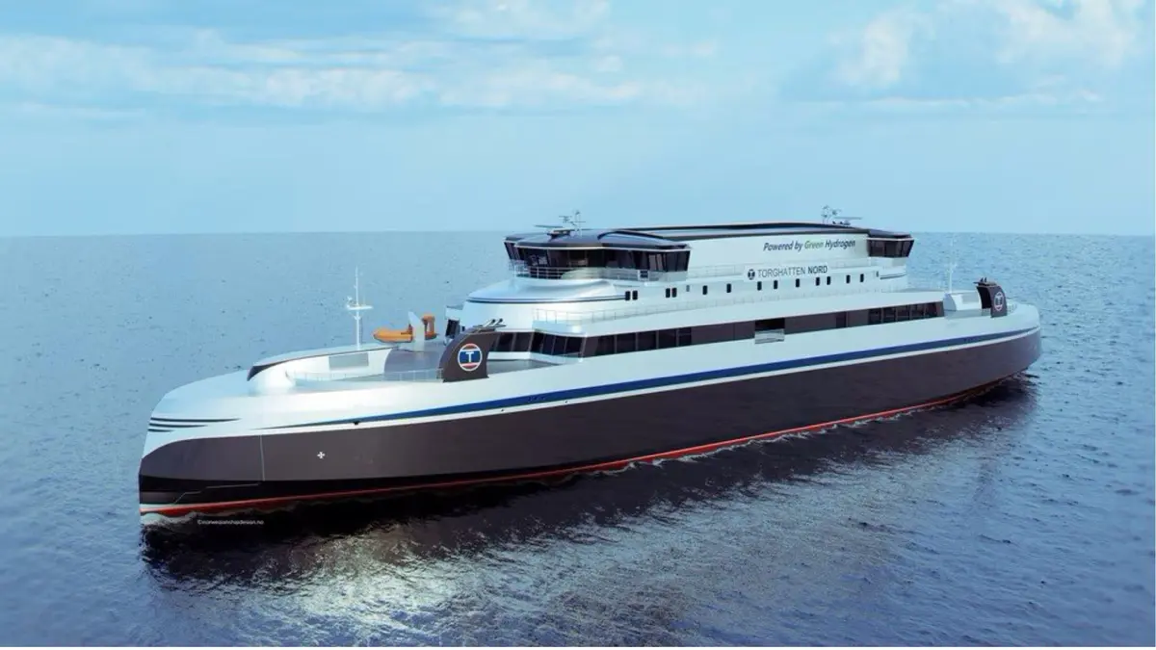





TRANSPORTATION
Norway to build world’s largest hydrogen-powered ships
Each 383.8-feet-long vessel can transport 120 cars, relying on green hydrogen for 85 percent of the Arctic voyage.
The hydrogen ferries will carry up to 120 cars on Norway's longest ferry route between Bodø and Lofoten.
Our daily news digest will keep you up to date with engineering, science and technology news, Monday to Saturday.
In a sign of changing times in the maritime industry, a Norwegian shipyard has been contracted to build the ‘world’s largest’ hydrogen-powered ships.
The Myklebust Shipyard in Norway has been selected by transport firm Torghatten Nord to build two hydrogen ferries.
These boats will be designed to transport up to 120 vehicles on Norway’s longest ferry route and are tailored to operate in the waters of the Vestfjordstrekninga fjord in the Arctic Circle.
According to Myklebust, the vessels will connect the towns of Bodø and Lofoten. The ferries will be bunkered with hydrogen locally produced in Bodø.
The Norwegian Ship Design Company will design the ships, which will be delivered in 2026.
A boost to the industry
The project gains significance as passenger transportation with hydrogen over such a hard and lengthy route has never been done before. All safety considerations must be considered in the design and technical solutions for ferries that travel long distances in weather-exposed waterways.
“This project is a significant boost for the Norwegian technology and shipyard environment, and we are proud to make it happen in Norway,” saidMarius Hansen, managing director of Torghatten Nord, in a statement.
The large-capacity ferries will be constructed from the Myklebust facility in Gursken, south of Ålesund. The construction would require increased staffing and high activity at the shipyard for the foreseeable future.
In addition to working closely with the Norwegian Maritime Directorate and the class business Lloyd’s Register (LR) to build protocols and safety standards for an entirely new class of ferries, the project has Norwegian suppliers for design, technology, equipment, and hydrogen.
“Together with the maritime cluster in Norway, we will develop new knowledge, secure jobs and be able to take on more apprentices with this assignment. It will be exciting to deliver something that no one has done before us,” said Leiv Sindre Muren, CEO of Myklebust, in a statement.
Zero-emission maritime solutions
Connecting Bodø, the islands of Røst and Værøy, and Moskenes along the 172-mile-long (278 kilometers) Vestfjordstrekninga ferry route, the world’s largest hydrogen-powered ships are set to advance maritime transportation.
According to Offshore Energy, these 117-meter-long (383.8 feet), 120-car vehicles will use green hydrogen as their main fuel source and cover at least 85 percent of their distance while navigating the harsh Arctic waters.
These ships will encounter challenging conditions because of their average speed of 17 knots, but they will designed to handle them effectively.
Their hydrogen storage units will provide fuel to fuel cells, which will turn energy into electricity to power the ships’ auxiliary systems and propulsion. According to Offshore Energy, this novel strategy is anticipated to cut CO2 emissions by about 26,500 tons annually along the route.
This collaborative project involves LR as the class society, owner Torghatten Nord, The Norwegian Ship Design Company, Myklebust Verft shipyard, systems integrator SEAM, and hydrogen supplier GreenH.
“The agreement shows that Norwegian shipyards are competitive, and it will contribute to building more expertise in zero-emission solutions,”said John-Ivar Nygård, Norway’s transport minister, in a statement.
With governments committed to achieving ‘net-zero’ objectives, the transportation sector anticipates a wave of such transformations in the next few years.
